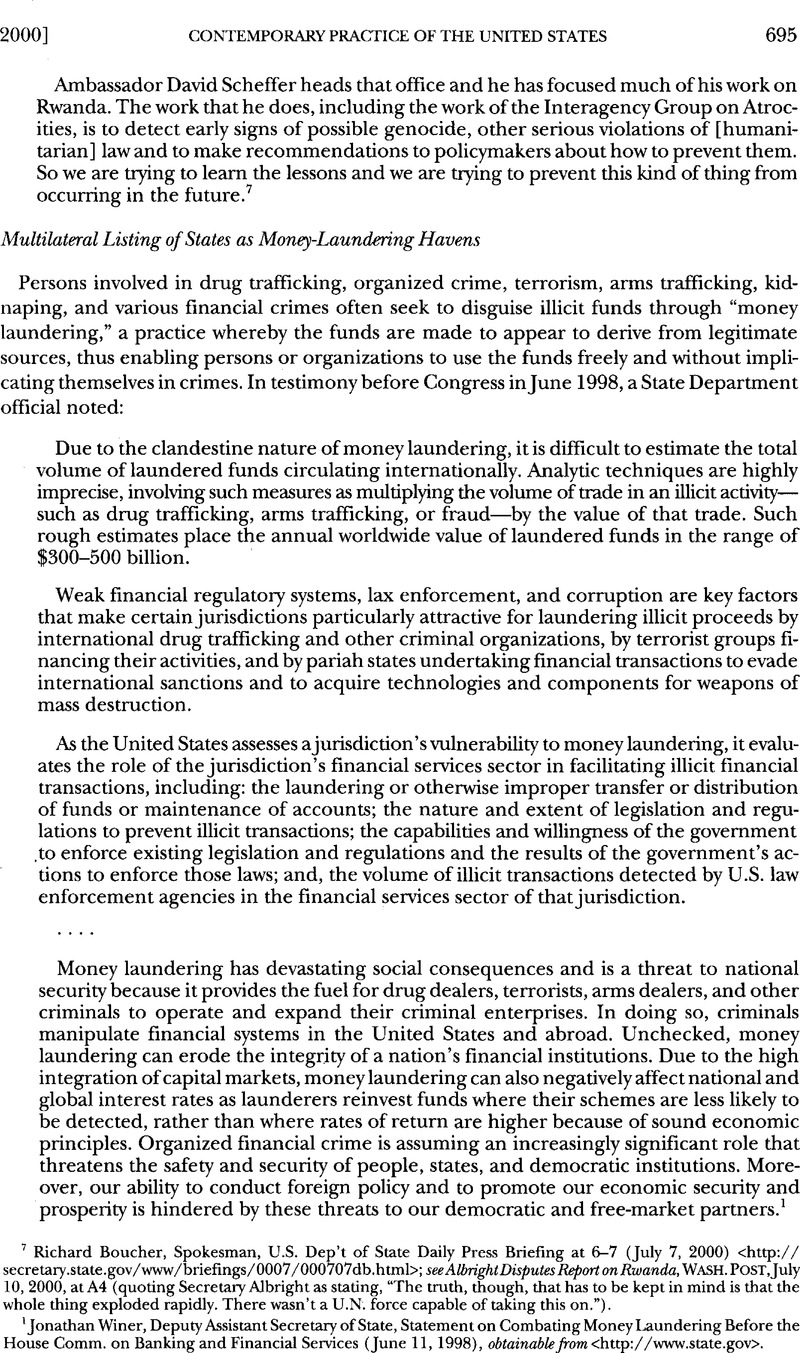Published online by Cambridge University Press: 10 March 2017

1 Winer, Jonathan, Deputy Assistant Secretary of State, Statement on Combating Money Laundering Before the House Comm. on Banking and Financial Services (June 11, 1998), obtainable from <http://www.state.gov>>Google Scholar.
2 See U.S. Dep’t of State, Crime Programs (Sept. 1999) <http://www.state.gov/www/global/narcotics_law/crime.html>
3 See, e.g., United States v. Approximately $24, 829, 681.80 in Funds (Plus Interest), No. 98 Civ. 2862 (LMM), 1999 WL 1080370 (S.D.N.Y. Nov. 29, 1999); United States v. Stein, Crim. A. No. 93–375, 1994 WL 285020 (E.D. La.June 23, 1994).
4 Information on the FATF (including online versions of its reports) is available at the organization’s Web site, <http://www.oecd.org/fatf/>.
5 FATF, The Forty Recommendations (Feb. 7, 1990) (revised 1996).
6 FATF, Report on Non-Cooperative Countries and Territories (Feb. 14, 2000).
7 FATF, Review to Identify Non-Cooperative Countries or Territories: Increasing the Worldwide Effectiveness of Anti-Money Laundering Measures (June 22, 2000). The noncooperative states or territories were Bahamas, Cayman Islands, Cook Islands, Dominica, Israel, Lebanon, Liechtenstein, Marshall Islands, Nauru, Niue, Panama, Philippines, Russia, St. Kitts and Nevis, and St. Vincent and the Grenadines.
8 For U.S. advisories, see <http://www.ustreas.gov/fincen/>; see also Kahn, Joseph, 15 Countries Named as Potential Money-Laundering Havens, N.Y. Times, June 23, 2000, at A4 Google Scholar.